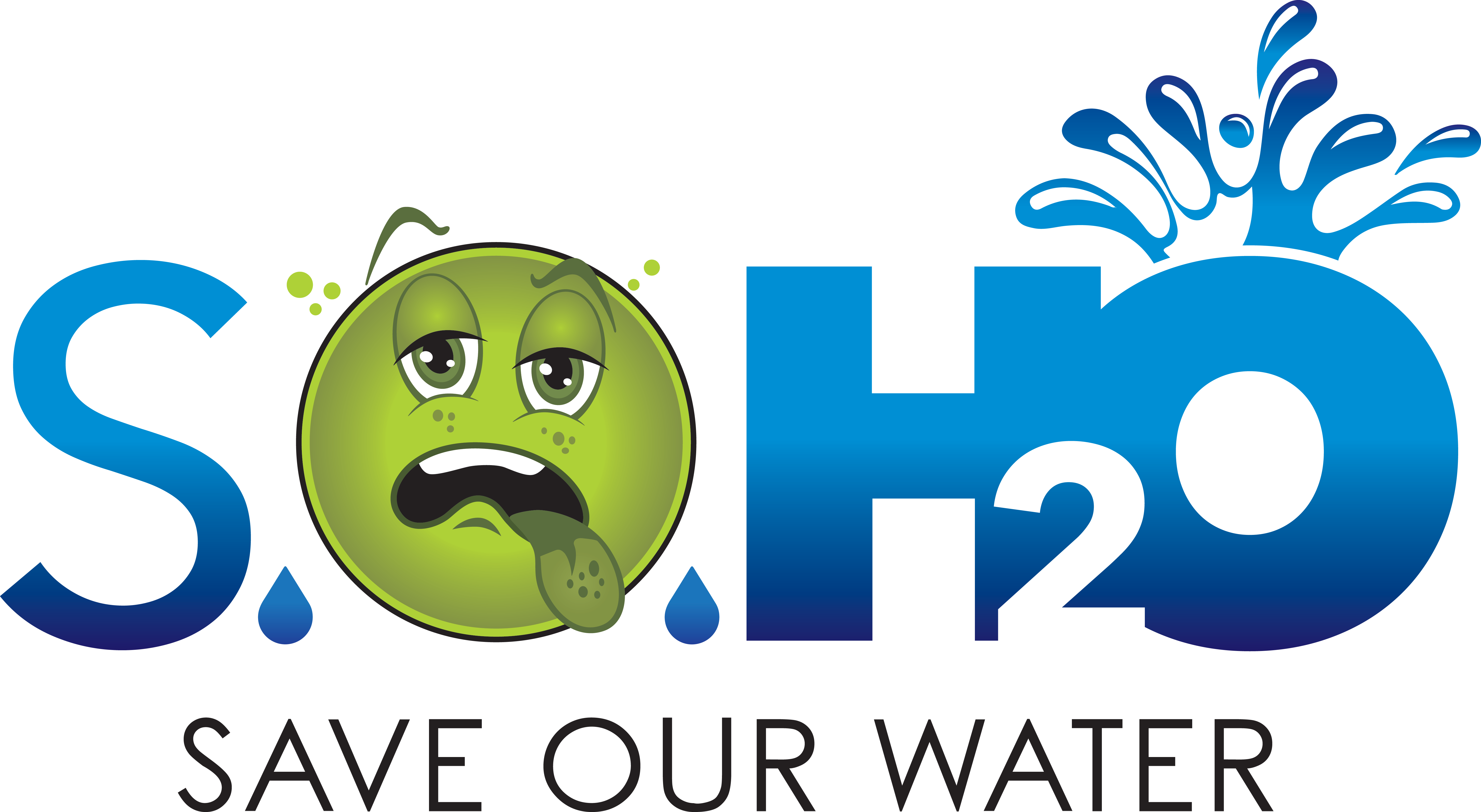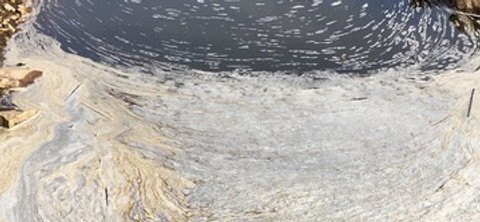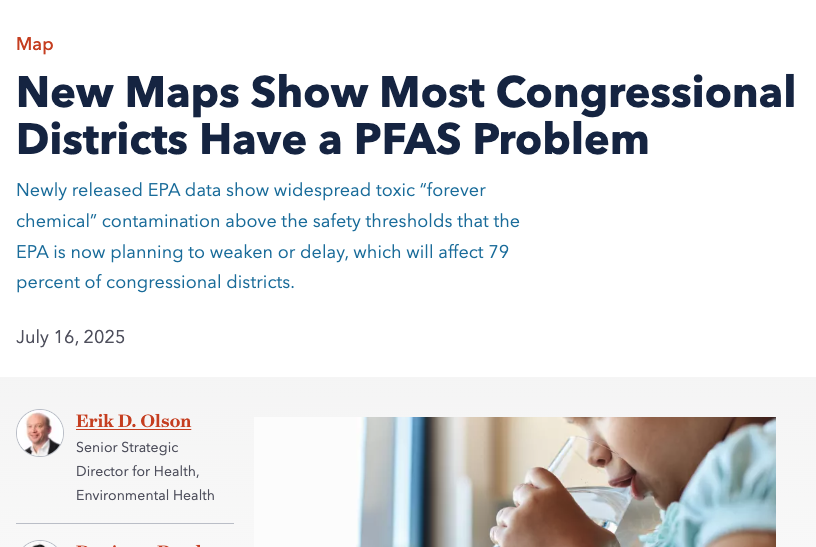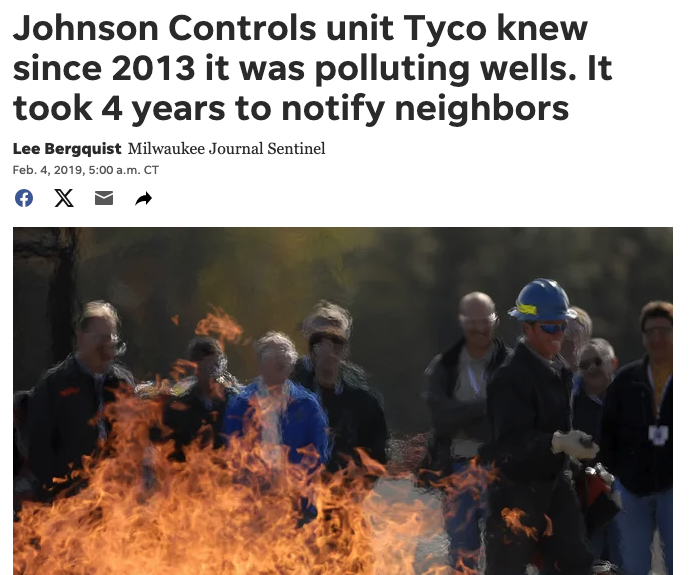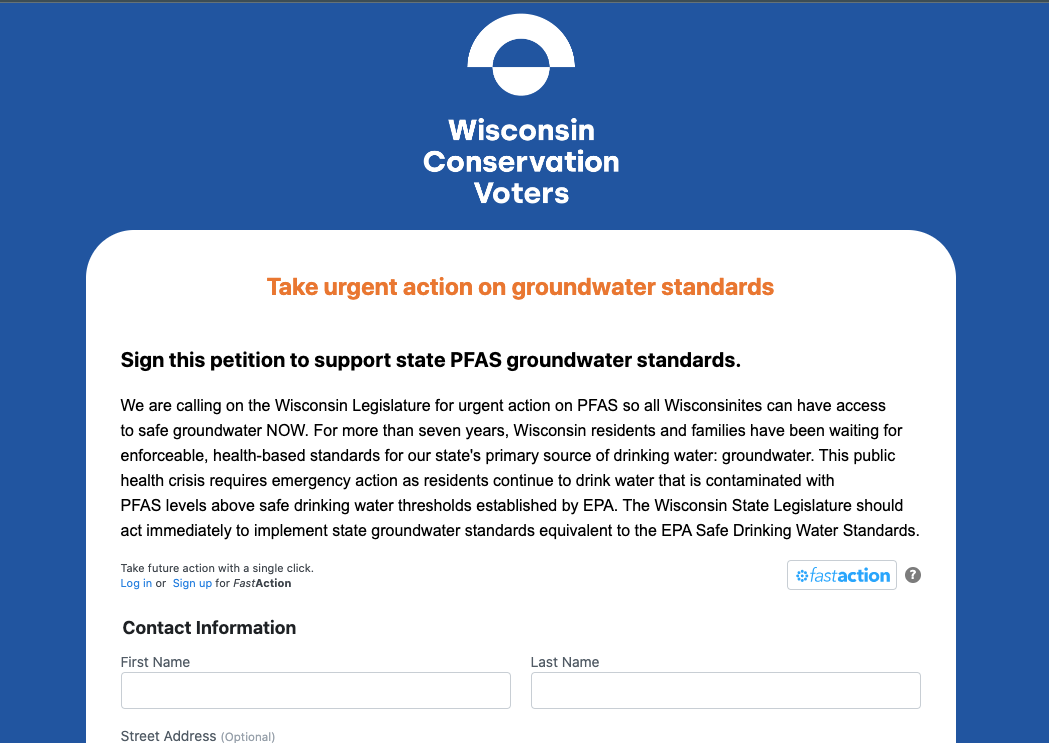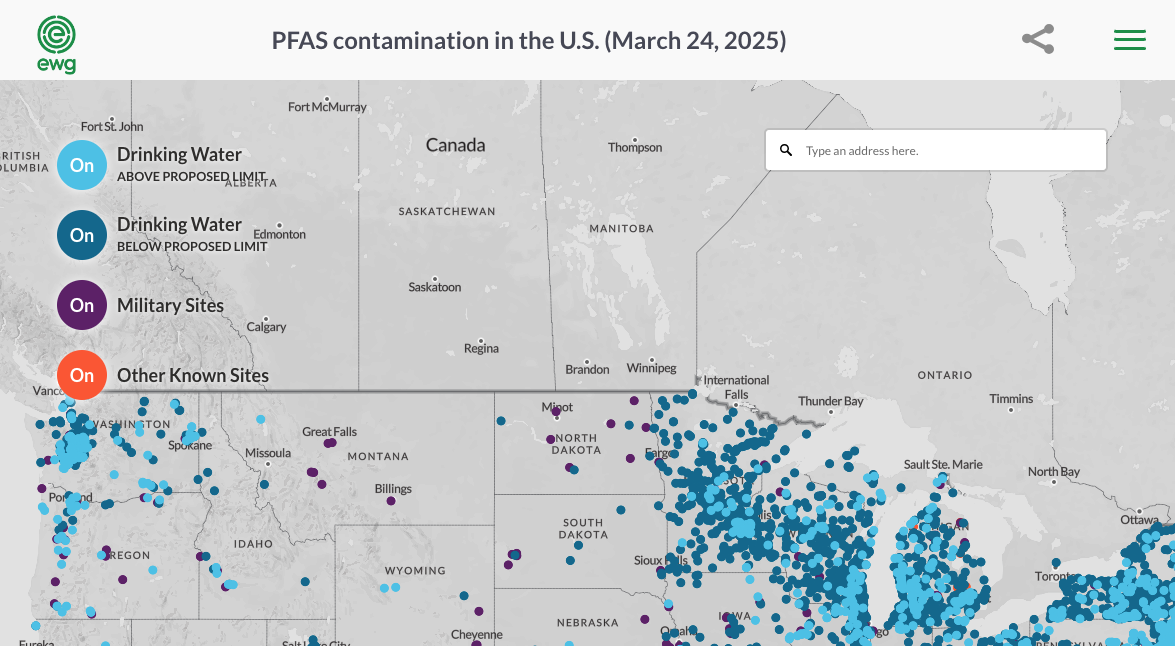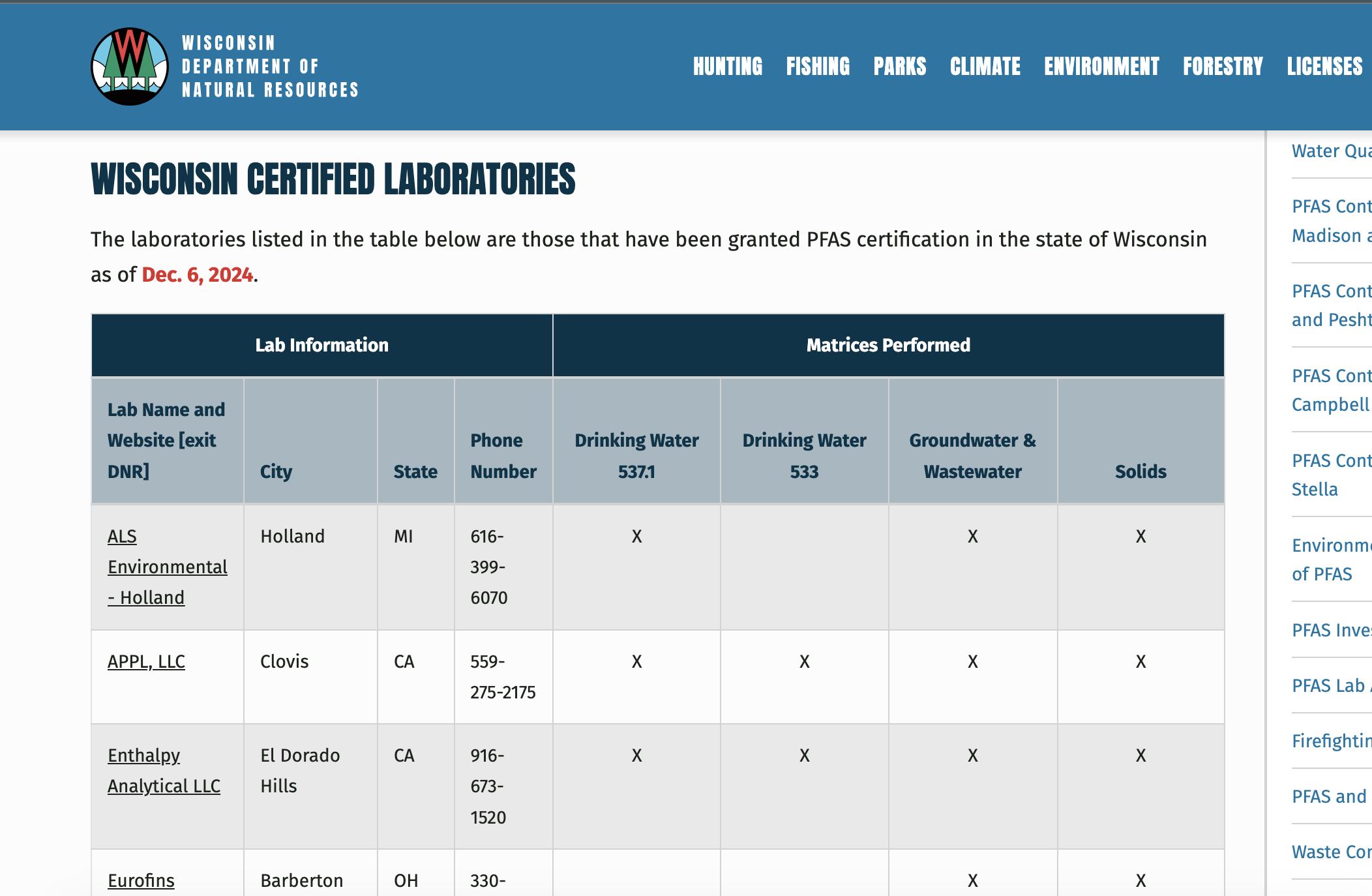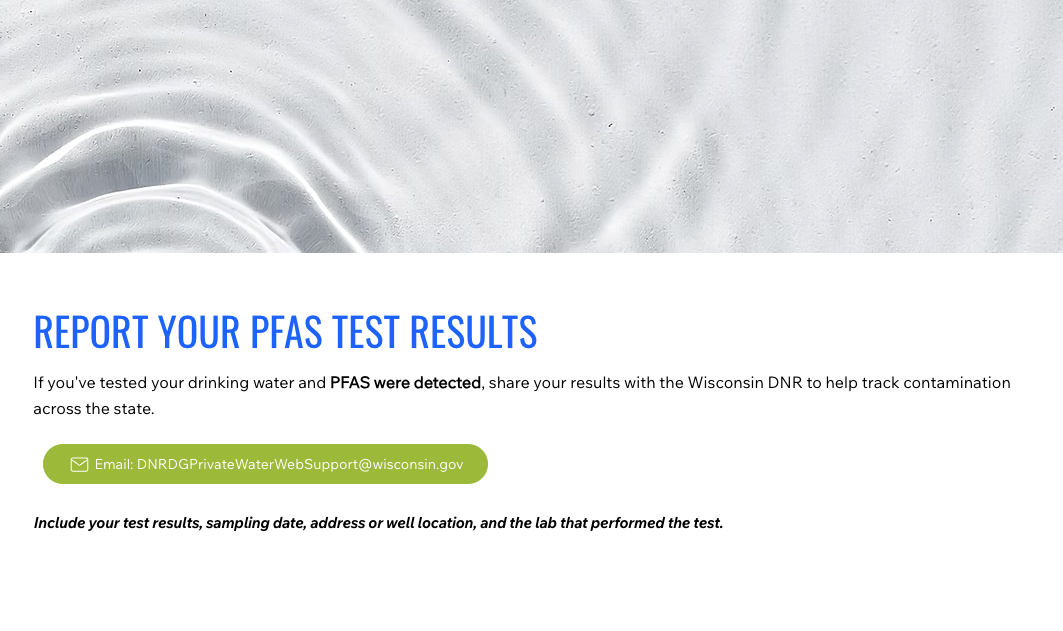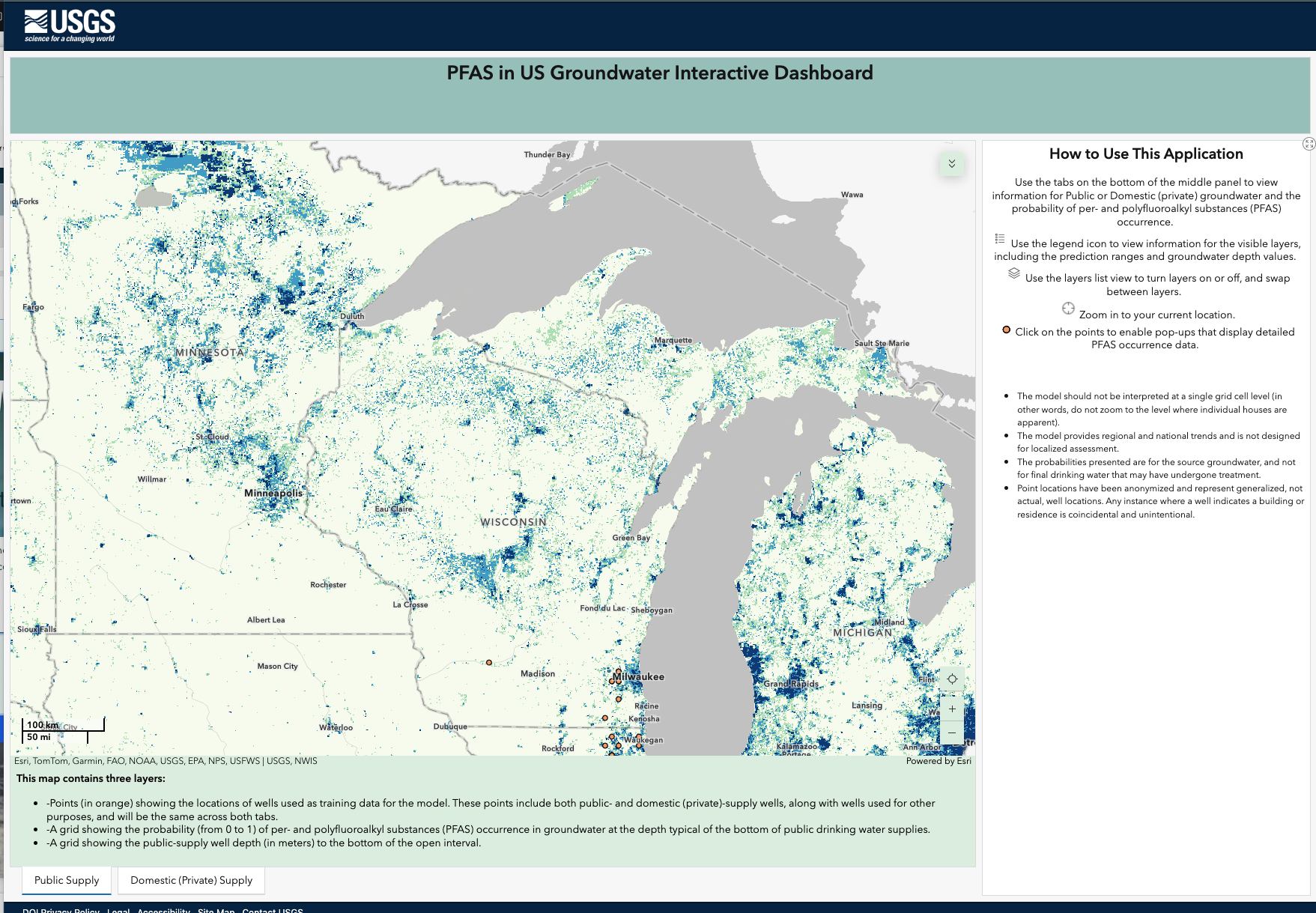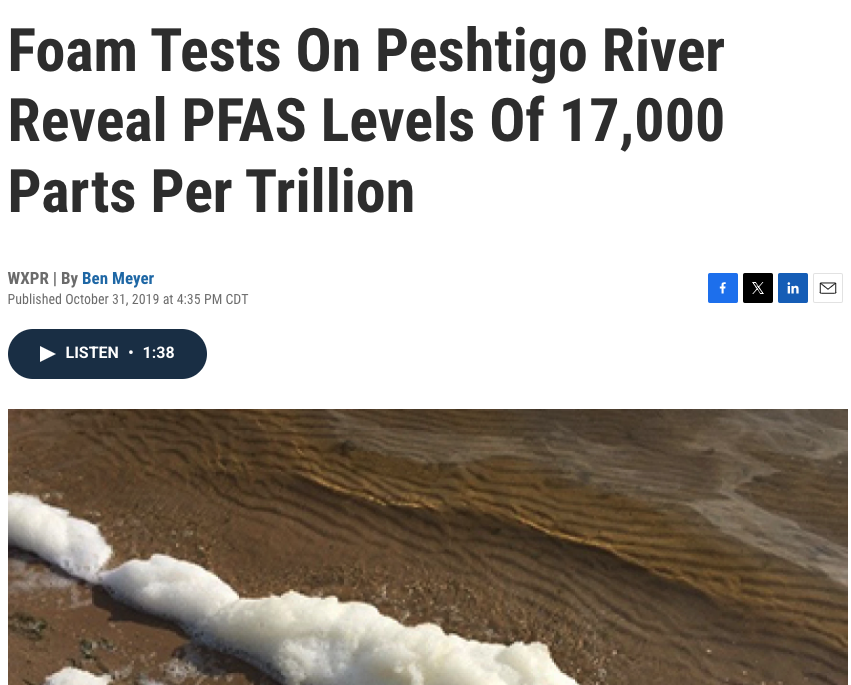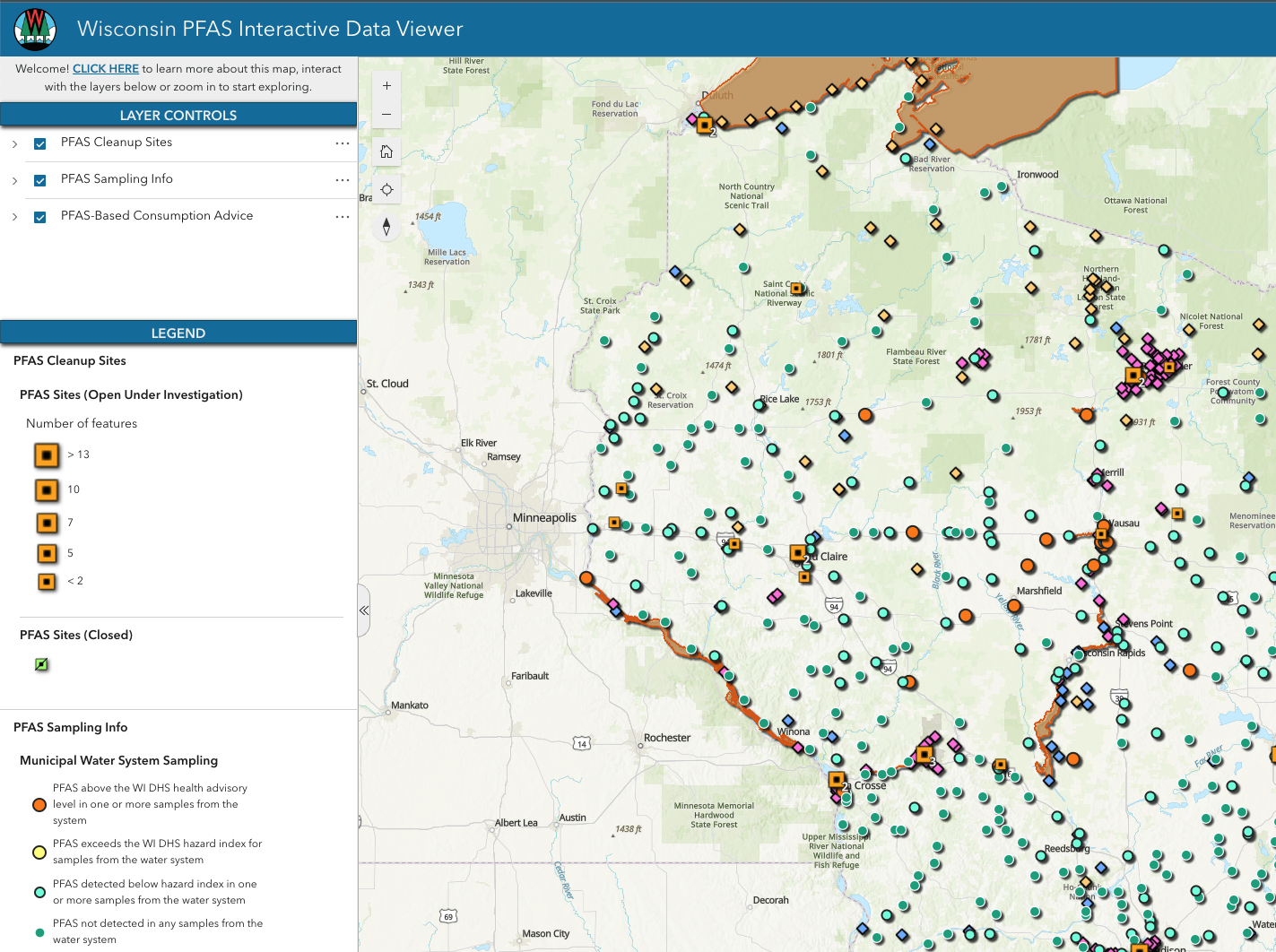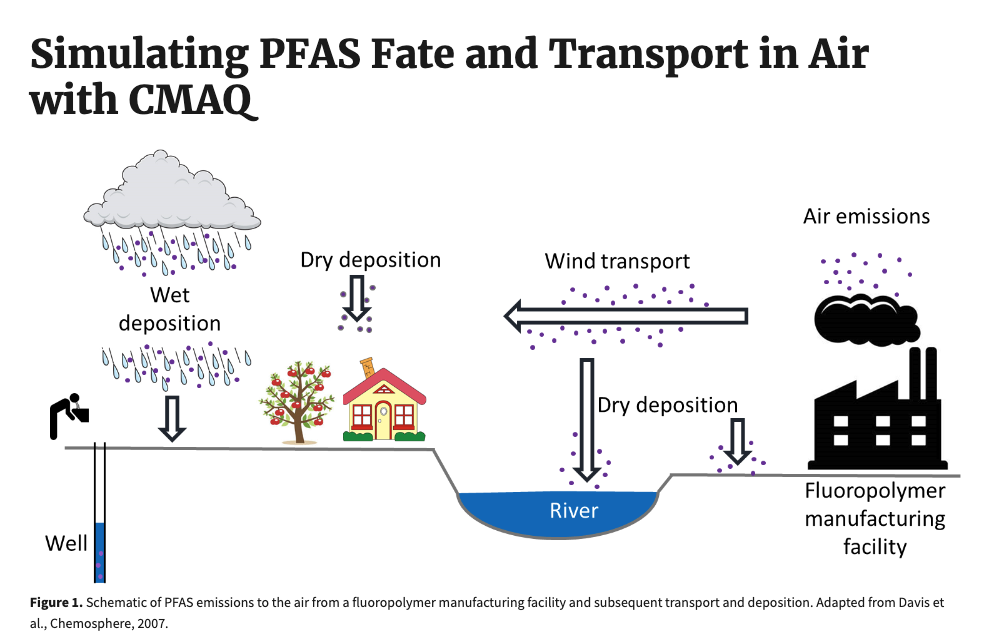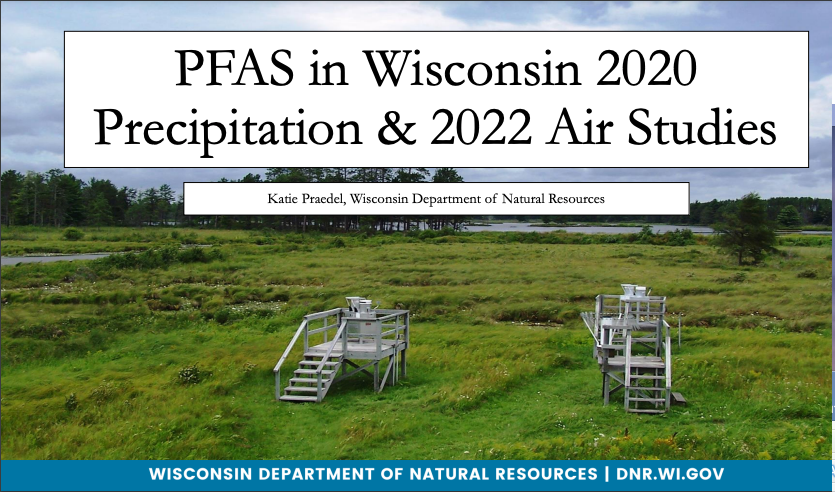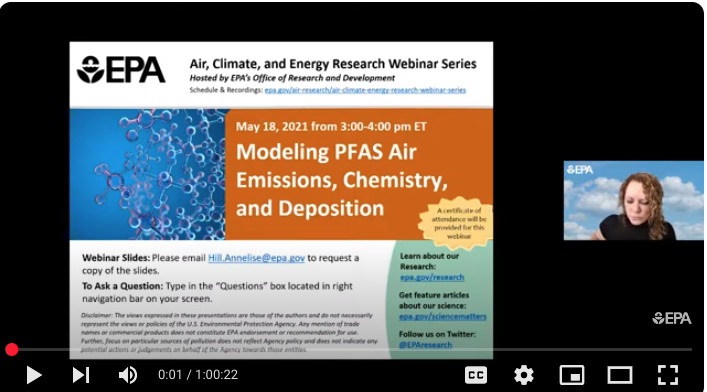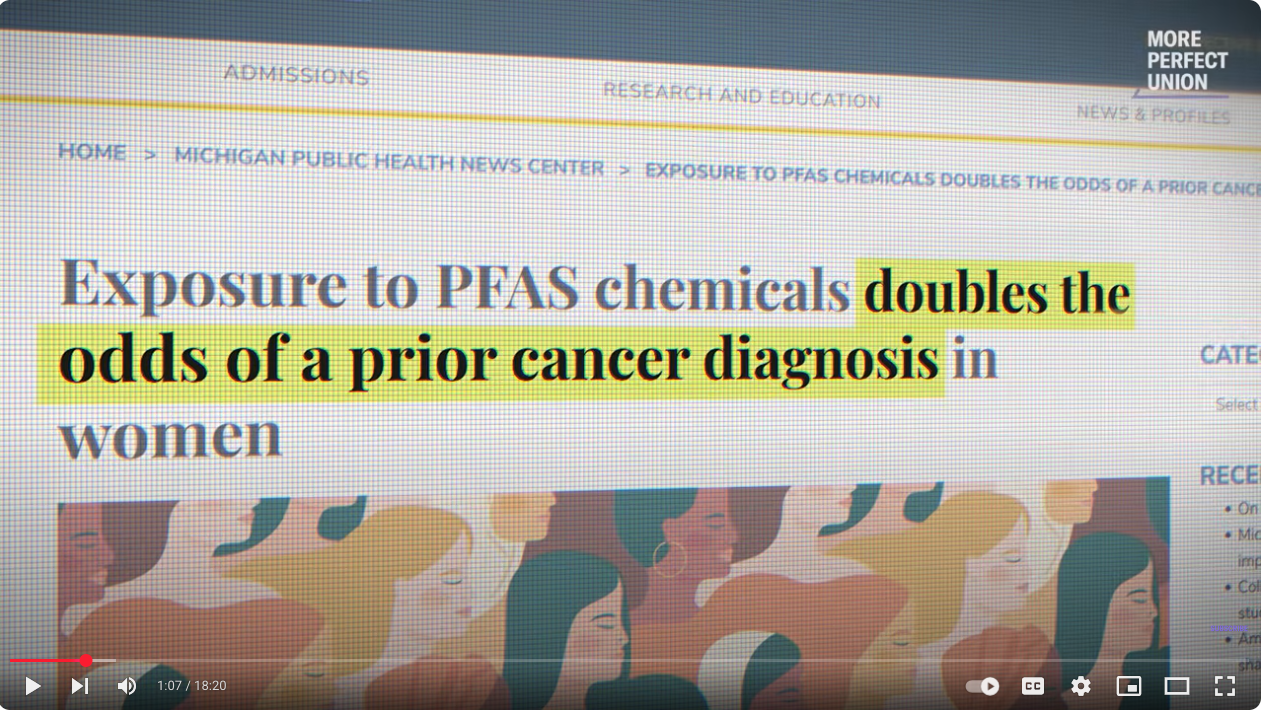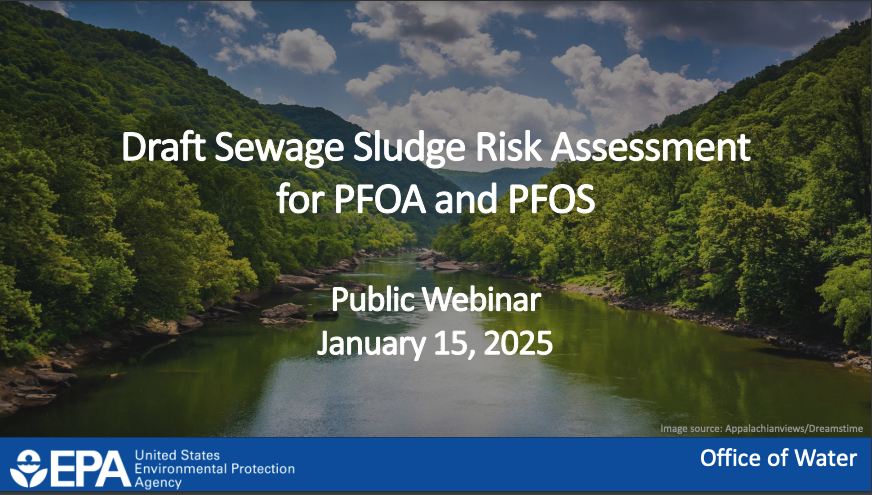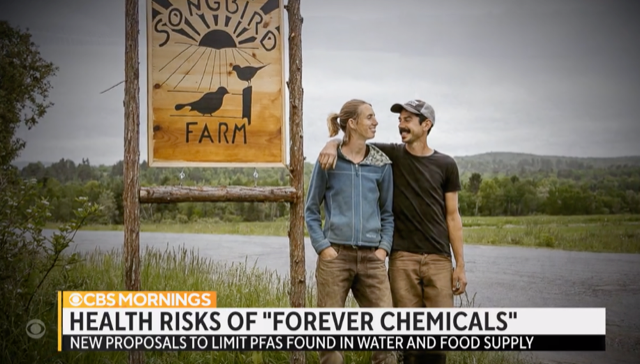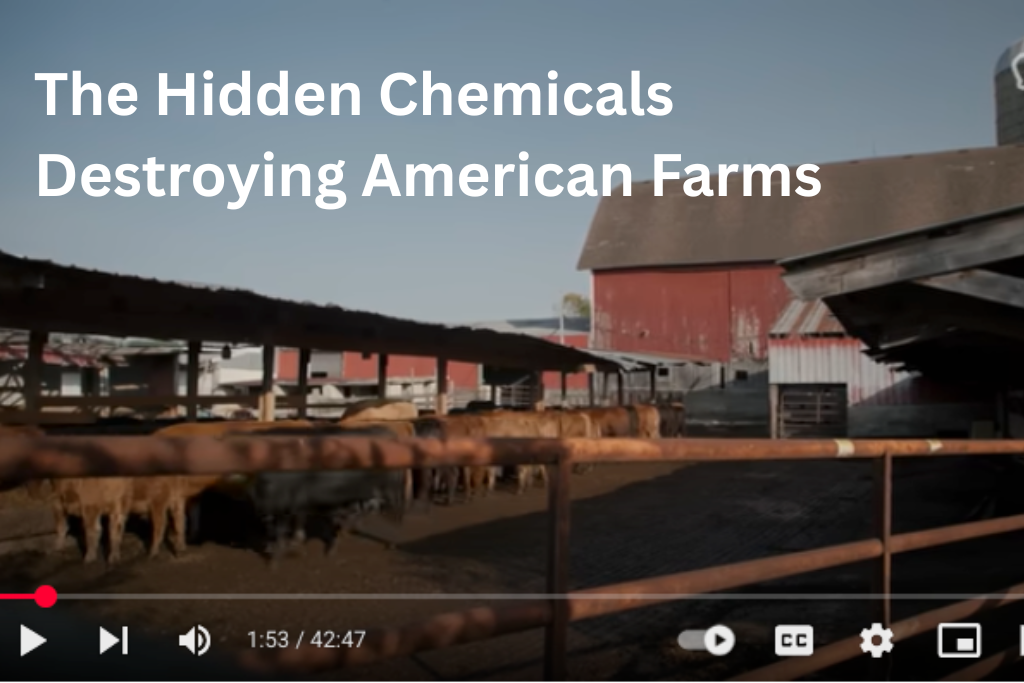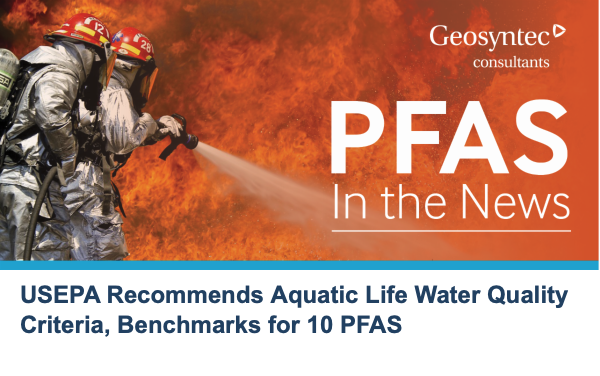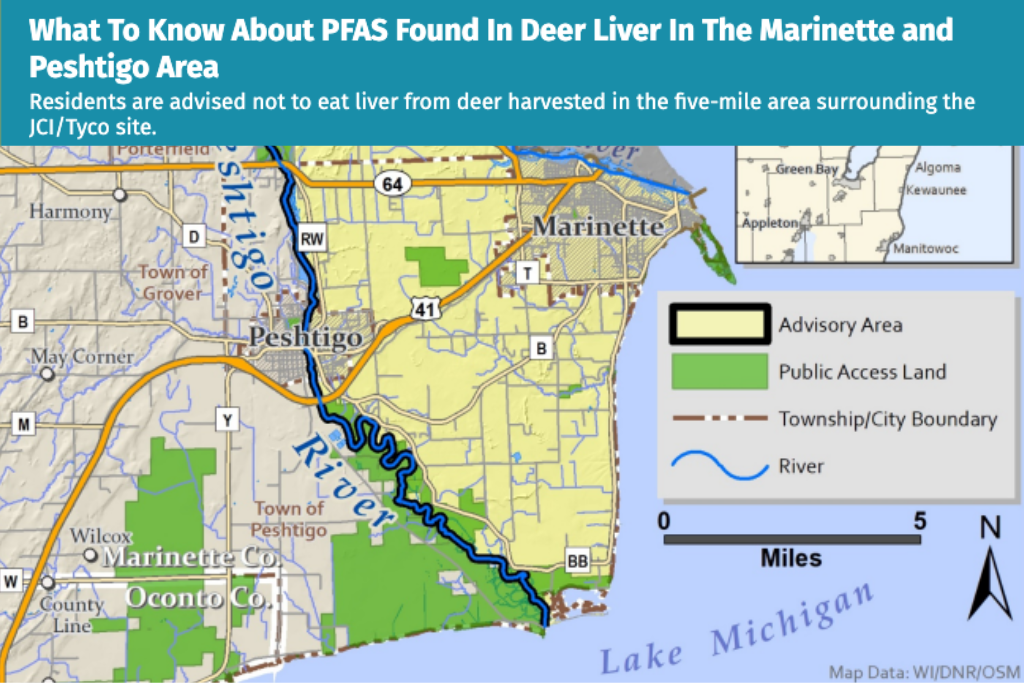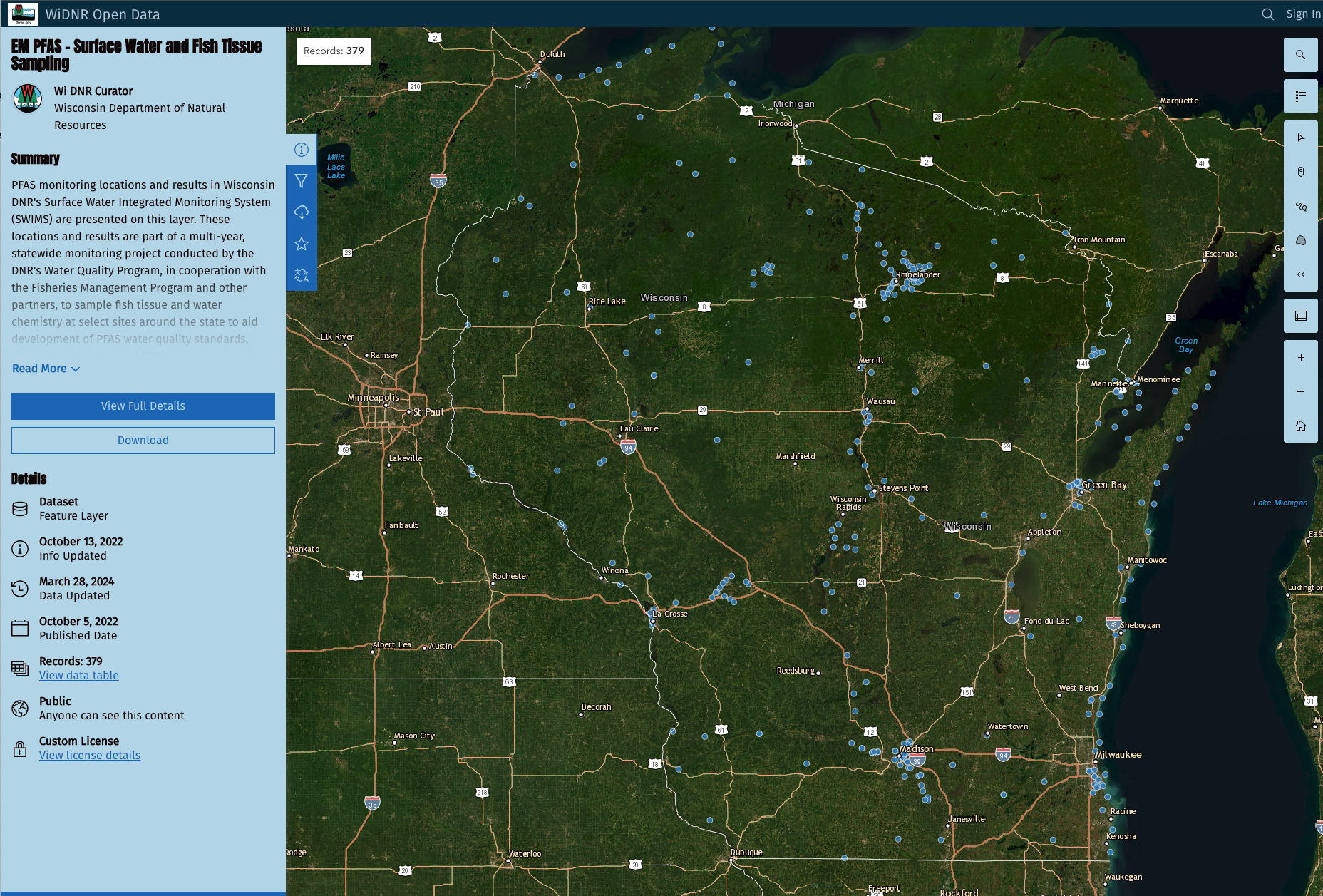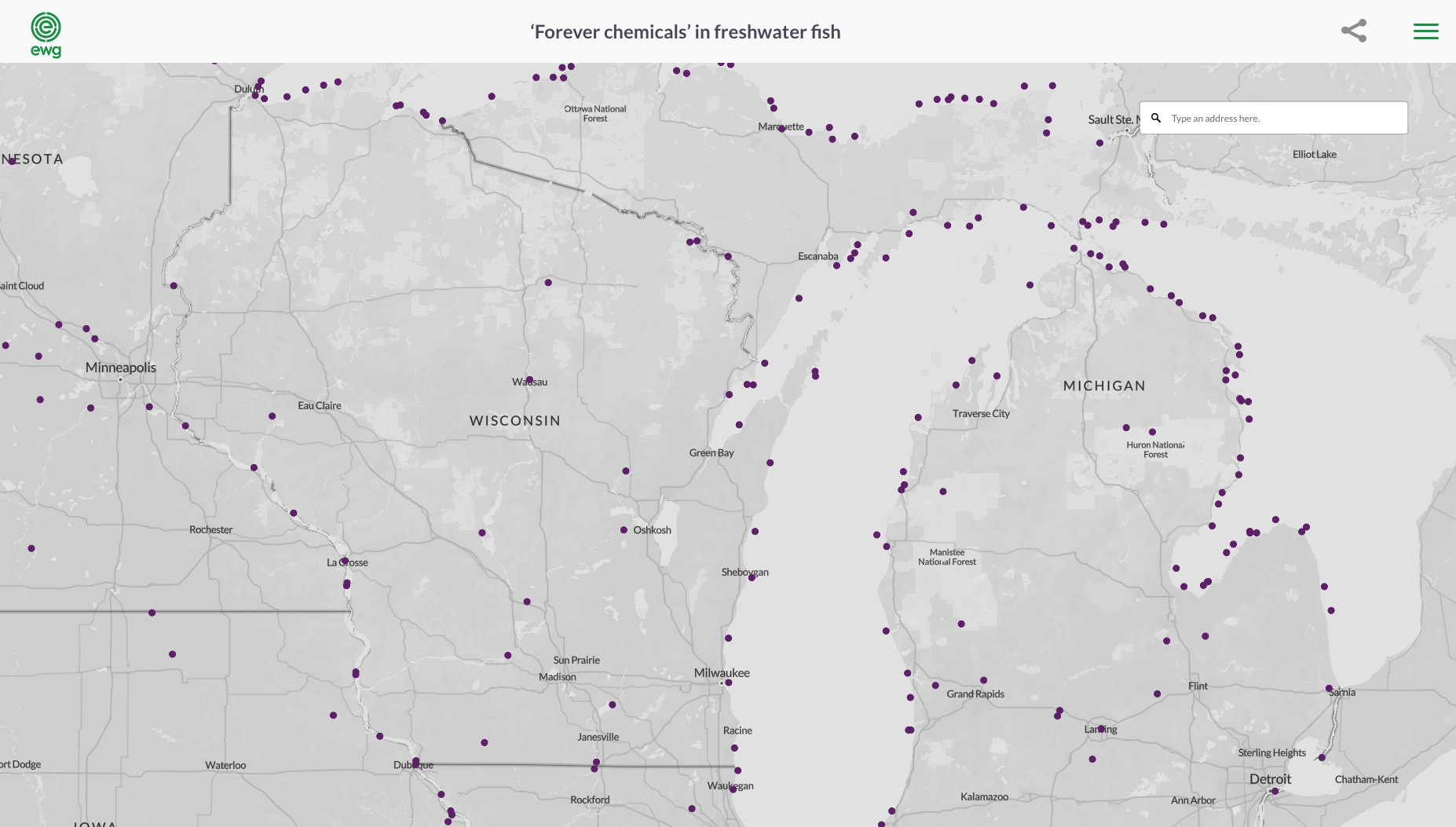
PFAS Contamination in Wisconsin: A Growing Crisis
PFAS pollution is infiltrating Wisconsin’s water, soil, air, and food supply—posing serious risks to public health, wildlife, and the environment. These chemicals persist in ecosystems and accumulate over time, impacting communities across the state.
Click a category below to learn more and see why action is needed.
PFAS contamination in Wisconsin’s drinking water threatens public health, with long-lasting chemicals persisting in municipal and private wells.
PFAS chemicals seep into Wisconsin’s groundwater, affecting private wells and aquifers that supply drinking water to communities.
Lakes, rivers, and streams across Wisconsin are vulnerable to PFAS pollution from industrial discharge, firefighting foam, and stormwater runoff.
PFAS chemicals can travel through the air and settle into soil and water, spreading contamination beyond their original source.
PFAS contamination in soil threatens agriculture by exposing crops and livestock to harmful chemicals that can enter the food chain.
PFAS bioaccumulate in fish and wildlife, posing risks to ecosystems and human health through recreational fishing and hunting.

Key Concerns
-
PFAS Found in Public Water Systems – Several municipal water supplies across Wisconsin have tested positive for PFAS above recommended levels.
-
Private Wells at Risk – Many rural households rely on private wells that are not routinely tested or regulated.
-
Health Risks from Consumption – Long-term exposure to PFAS in drinking water is linked to cancer, immune suppression, liver damage, and developmental issues in children.
-
Lack of Federal & State Standards – While progress is being made, many systems still operate without enforceable PFAS limits.
Related Resources
Use the EWG Tap Water Database to look up your local utility and view testing results for PFAS and other contaminants.
In-depth overview of how PFAS affects WI drinking water, health risks, testing, home filtration, private well gaps, and community organizing tips.
In-depth overview of how PFAS affects WI drinking water, health risks, testing, home filtration, private well gaps, and community organizing tips.
Concise summary of WI PFAS problems, needed policy changes, and action steps for residents. Excellent handout or intro resource.
Action guide focused on how to organize, reduce exposure, push for drinking water testing, and advocate at the local level.
Learn how the EPA is cracking down on PFAS pollution with stronger discharge limits, set case-by-case to protect our waterways and health. This fact sheet breaks down what it means for industries and your community.
A Summary of Current Detections and their Implications for Wisconsin
DRINKING WATER
How PFAS Threaten Our Tap Water
Drinking water is the most direct and dangerous path of PFAS exposure. Once contaminated, these chemicals are incredibly difficult to remove and persist for years in water systems. Ensuring safe, tested, and regulated drinking water is a foundational step toward public health protection.

Key Concerns
-
Contamination of Private Wells – PFAS compounds have seeped into shallow aquifers, directly affecting residential well water.
-
Long-Term Persistence – PFAS chemicals do not naturally break down, making groundwater contamination extremely difficult to remediate.
-
Limited Monitoring – Most private wells are not subject to routine PFAS testing, leaving families unaware of exposure.
-
Impact on Aquifers – Deeper aquifers, once considered safe, are at growing risk in areas with sustained contamination.
Key Concerns
-
Contamination of Private Wells – PFAS compounds have seeped into shallow aquifers, directly affecting residential well water.
-
Long-Term Persistence – PFAS chemicals do not naturally break down, making groundwater contamination extremely difficult to remediate.
-
Limited Monitoring – Most private wells are not subject to routine PFAS testing, leaving families unaware of exposure.
-
Impact on Aquifers – Deeper aquifers, once considered safe, are at growing risk in areas with sustained contamination.
Related Resources
Explains how PFAS leaches into groundwater, lack of enforceable WI standards, private well risks, and organizing strategies.
[Download PDF]Covers groundwater regulation failures, Natural Resources Board decisions, and advocacy for protective standards.
[Download PDF]Official DNR guidance document covering goals, gaps in groundwater monitoring, and future policy intentions.
[Download PDF]
GROUND WATER
Hidden Risks Beneath the Surface
Groundwater supplies drinking water for over two-thirds of Wisconsin residents. Once PFAS reach underground aquifers, they can spread silently and remain for decades. Without aggressive testing, treatment, and containment efforts, contamination can worsen and expand unnoticed.

Key Concerns
-
Aerial Spread of PFAS – Manufacturing facilities and foam spraying operations can release PFAS into the air, which later settles into soil, water, and vegetation.
-
Contamination Beyond the Source – Airborne PFAS particles can travel miles from their point of origin, impacting rural and suburban areas not directly connected to known spill sites.
-
Lack of Regulation – PFAS air emissions have not been consistently regulated at the state or federal level, leaving gaps in monitoring and accountability.
-
Human Exposure via Inhalation or Fallout – PFAS can be inhaled or ingested through dust and contaminated surfaces where air-deposited particles settle.
Key Concerns
-
Contaminated Lakes, Rivers, and Streams – PFAS has been detected in surface water bodies near industrial sites, airports, and wastewater discharge points.
-
Runoff from Firefighting Foam Use – Fire training facilities and emergency response events have contributed to localized contamination in surface water.
-
Ecosystem Exposure – Fish, amphibians, and aquatic vegetation absorb PFAS, disrupting food webs and biodiversity.
-
Stormwater Spread – Contaminated stormwater runoff can carry PFAS from urban and industrial areas into natural waterways.
Related Resources
Graphic showing PFAS released into the air through atmospheric emissions, waste incineration, and how it deposits into soil and water via wet/dry deposition.
[Download PDF]Covers PFAS entry routes via runoff, firefighting foam, wastewater, biosolids, and major surface water impacts in WI.
SURFACE WATER
Contamination in Rivers, Lakes, and Streams
Surface water is essential not only for recreation and wildlife, but also for municipal water sourcing and agriculture. PFAS-contaminated rivers and lakes can spread pollution downstream, crossing county and state lines, and affecting entire watersheds. Addressing surface water contamination is crucial to protect drinking water supplies, ecosystems, and outdoor heritage.

Key Concerns
-
Aerial Spread of PFAS – Manufacturing facilities and foam spraying operations can release PFAS into the air, which later settles into soil, water, and vegetation.
-
Contamination Beyond the Source – Airborne PFAS particles can travel miles from their point of origin, impacting rural and suburban areas not directly connected to known spill sites.
-
Lack of Regulation – PFAS air emissions have not been consistently regulated at the state or federal level, leaving gaps in monitoring and accountability.
-
Human Exposure via Inhalation or Fallout – PFAS can be inhaled or ingested through dust and contaminated surfaces where air-deposited particles settle.
Key Concerns
-
Aerial Spread of PFAS – Manufacturing facilities and foam spraying operations can release PFAS into the air, which later settles into soil, water, and vegetation.
-
Contamination Beyond the Source – Airborne PFAS particles can travel miles from their point of origin, impacting rural and suburban areas not directly connected to known spill sites.
-
Lack of Regulation – PFAS air emissions have not been consistently regulated at the state or federal level, leaving gaps in monitoring and accountability.
-
Human Exposure via Inhalation or Fallout – PFAS can be inhaled or ingested through dust and contaminated surfaces where air-deposited particles settle.
Related Resources
Graphic showing PFAS released into the air through atmospheric emissions, waste incineration, and how it deposits into soil and water via wet/dry deposition.
[Download PDF]See how the EPA models PFAS movement through the air using CMAQ to better understand where these chemicals travel and settle.
Graphic showing the most effective ways to reduce PFAS exposure, starting with elimination and substitution, applicable to both air and occupational exposure.
AIR DEPOSITION
PFAS in the Air We Breathe
Unlike spills or discharges, air deposition can carry PFAS into areas that appear untouched by industrial activity. This invisible pathway poses a major challenge for identifying exposure sources and protecting communities. Monitoring and regulating PFAS air emissions is critical to understanding the full scope of contamination.

Key Concerns
-
PFAS-Laced Biosolids – Contaminated sludge from wastewater treatment plants has been spread on agricultural fields as fertilizer, unknowingly introducing PFAS into the soil.
-
Uptake into Crops – Certain plants, especially leafy greens and root vegetables, can absorb PFAS from contaminated soil, entering the human food chain.
-
Livestock Exposure – Animals raised on contaminated land or drinking PFAS-tainted water may accumulate the chemicals in meat, milk, and eggs.
-
Long-Term Soil Persistence – PFAS bind tightly to soil particles, remaining in farmland for years and complicating future use or cleanup.
Key Concerns
-
PFAS-Laced Biosolids – Contaminated sludge from wastewater treatment plants has been spread on agricultural fields as fertilizer, unknowingly introducing PFAS into the soil.
-
Uptake into Crops – Certain plants, especially leafy greens and root vegetables, can absorb PFAS from contaminated soil, entering the human food chain.
-
Livestock Exposure – Animals raised on contaminated land or drinking PFAS-tainted water may accumulate the chemicals in meat, milk, and eggs.
-
Long-Term Soil Persistence – PFAS bind tightly to soil particles, remaining in farmland for years and complicating future use or cleanup.
Related Resources
This EPA FAQ highlights that applying sewage sludge (biosolids) to land can release PFAS into groundwater, surface water, and drinking water sources, contributing to environmental contamination.
Includes visual explanation of PFAS reaching soil through biosolids, wastewater irrigation, and industrial waste.
A draft risk assessment examining the health and environmental risks of PFOA and PFOS in sewage sludge (biosolids) applied to land. This assessment informs potential regulatory action on PFAS in agriculture.
Maps showing designated fields where biosolids from Marinette and Peshtigo are applied, published by the Wisconsin DNR in 2019.
State Statistics Dashboard for Wisconsin Biosolids
SOIL & AGRICULTURE
The Impact on the Food We Eat
Soil contamination from PFAS threatens the safety of our food, the health of farmers, and the long-term viability of agricultural land. In Marinette County and beyond, fields once used for food production are now under scrutiny due to past biosolid applications. Addressing PFAS in agriculture is essential for public health and local economies.

Key Concerns
-
PFAS Accumulation in Fish – PFAS concentrate in the blood and organs of fish, especially in high-trophic species like trout, bass, and perch.
-
Health Advisories on Fish Consumption – Several Wisconsin waterways now carry advisories warning against eating locally caught fish due to PFAS contamination.
-
Wildlife Exposure and Ecosystem Risk – Birds, mammals, and amphibians that rely on contaminated water or prey accumulate PFAS, affecting reproduction, development, and survival.
-
Hunting and Fishing Culture at Risk – PFAS threaten the safety of longstanding outdoor traditions and subsistence practices in affected regions.
Key Concerns
-
PFAS Accumulation in Fish – PFAS concentrate in the blood and organs of fish, especially in high-trophic species like trout, bass, and perch.
-
Health Advisories on Fish Consumption – Several Wisconsin waterways now carry advisories warning against eating locally caught fish due to PFAS contamination.
-
Wildlife Exposure and Ecosystem Risk – Birds, mammals, and amphibians that rely on contaminated water or prey accumulate PFAS, affecting reproduction, development, and survival.
-
Hunting and Fishing Culture at Risk – PFAS threaten the safety of longstanding outdoor traditions and subsistence practices in affected regions.
Related Resources
The Wisconsin DNR issued a public health advisory after PFAS were detected in deer liver samples near the JCI/Tyco site in Marinette. The advisory recommends avoiding liver consumption from deer harvested in the area.
Explore interactive sampling data collected by the Wisconsin DNR showing PFAS levels in surface water and fish tissue across Wisconsin rivers, lakes, and streams.
FISH & WILDLIFE
The Impact on Ecosystems and Wildlife
PFAS contamination doesn’t stop at humans. It spreads through ecosystems, disrupting entire food webs and threatening biodiversity. For many in Wisconsin, hunting and fishing aren’t just pastimes—they’re ways of life. Ensuring safe fish and wildlife populations is essential for public health, and cultural heritage.
